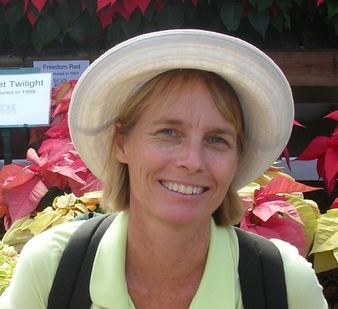The following is an ASU science and tech news report about one of our alumnae, dated April 30 and with the title above:
Janet Franklin, a professor in Arizona State University’s School of Geographical Sciences and Urban Planning, has been elected to the National Academy of Sciences. Franklin is one of the 84 new members and 21 foreign associates from 15 countries elected to the academy. Election is considered one of the highest honors that can be accorded a scientist or engineer.
The National Academy of Sciences (NAS) is an honorific society of distinguished scholars engaged in scientific and engineering research, dedicated to the advancement of science and technology, and to their use for the general welfare of society. NAS members and foreign associates are elected in recognition of their distinguished and continuing achievements in original research. Franklin’s research is focused on the dynamics of terrestrial (land) plant communities at the landscape scale.
She said she was shocked when she got the call from the academy, but was happy about how proud it made her father. “He took me to my first public science lecture when I was 12 – it was Linus Pauling,” Franklin said. “It made me want to be a scientist and solve puzzles.”
Working with the idea that Earth is a whole, living organism, Franklin’s research addresses the impacts of human-caused landscape change on the environment and its long-term implications for the environment and all things living in it. Combining statistical modeling, computer simulation, geospatial data and spatial analysis with field work, Franklin and her colleagues have shown:
- Remote sensing-based estimates of tree and shrub cover in arid rangelands reveal the disproportionate contribution of woody plants to ecosystem processes and services (nutrient and water cycling, livestock grazing) in Africa and the American Southwest.
- In the California biodiversity hotspot, increases and decreases in fire frequency occurring in the same region as a result of human activities can have devastating consequences for biodiversity and ecosystem services in a mosaic of natural communities that would otherwise be resilient to natural disturbance.
- By developing novel linkages among methods that address processes at different scales (ecological populations, species ranges, land use, land forms, regional and global climate), her work has revealed synergies among human impacts (land use change, climate change, invasive species) leading to habitat loss and species decline.
- New insights into the role of prehistoric humans in shaping ecological communities in the Pacific and Caribbean islands, and powerful forecasting tools for managing contemporary landscapes in the face of global change today.
Franklin, who also is a senior sustainability scientist in ASU’s Global Institute of Sustainability, has published more than 120 refereed papers in a wide variety of scholarly journals. Her research has been supported by the National Science Foundation, NASA and the National Geographic Society. She has also worked closely with the U.S. Forest Service and U.S. Geological Survey.


